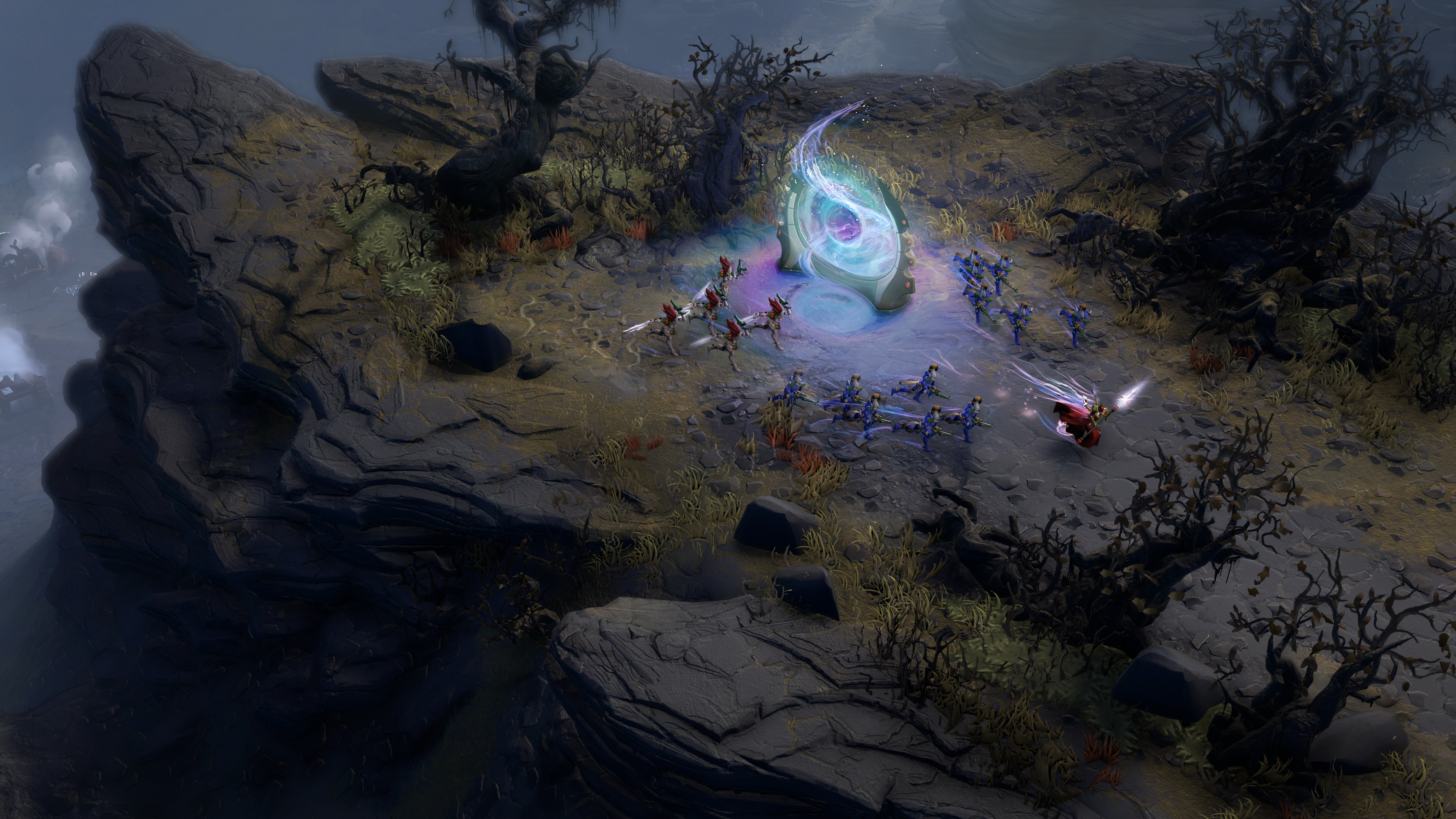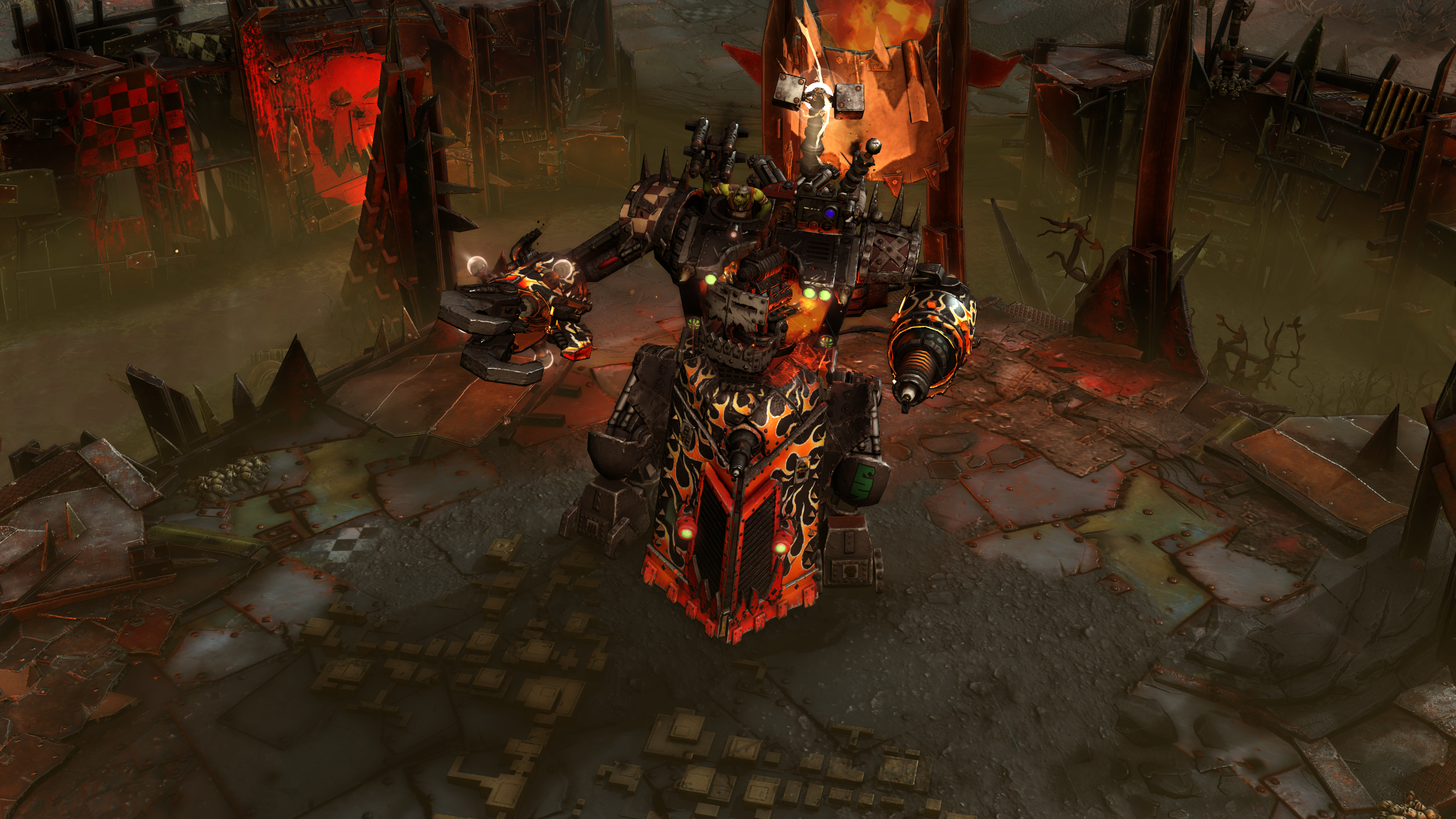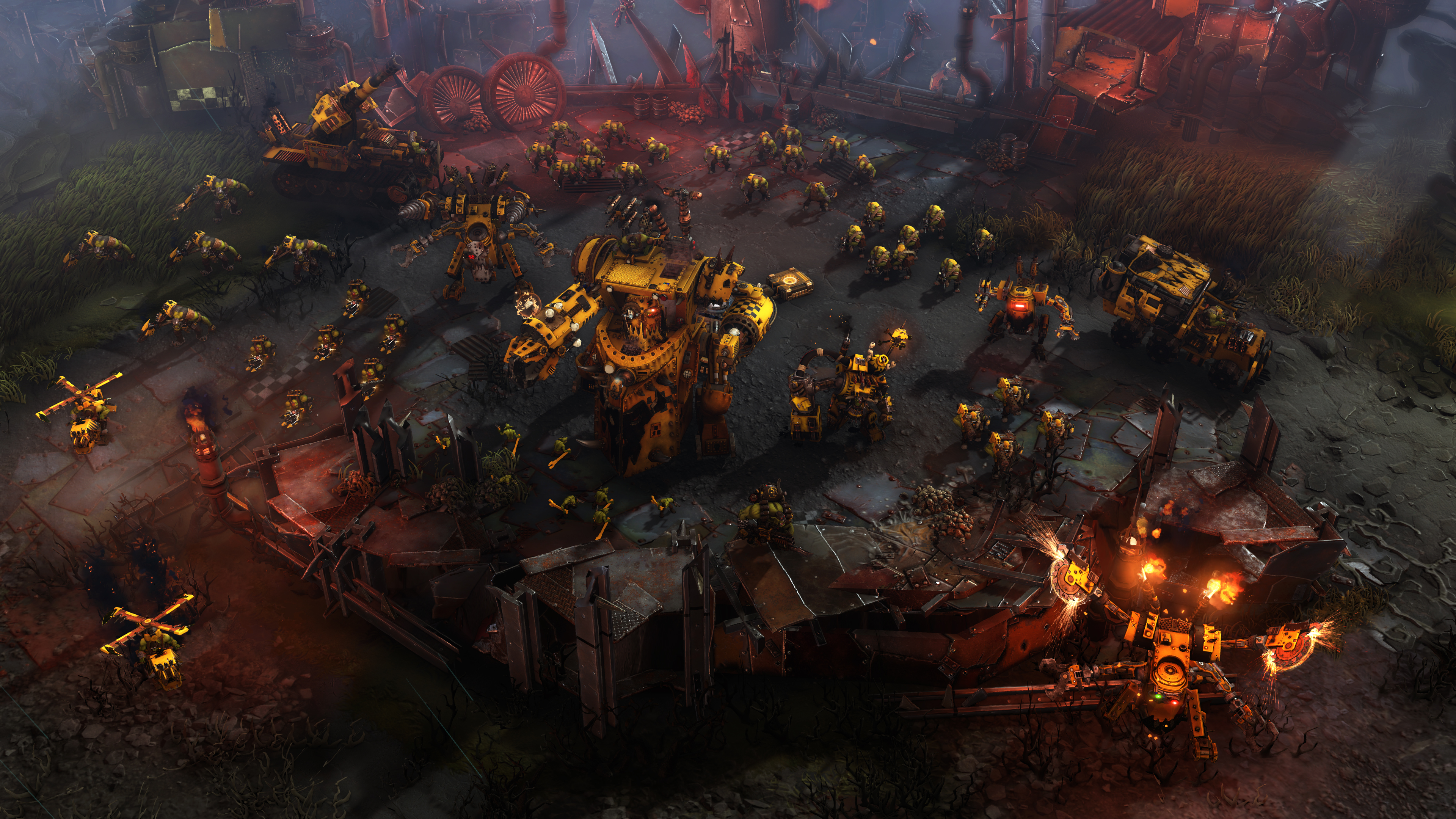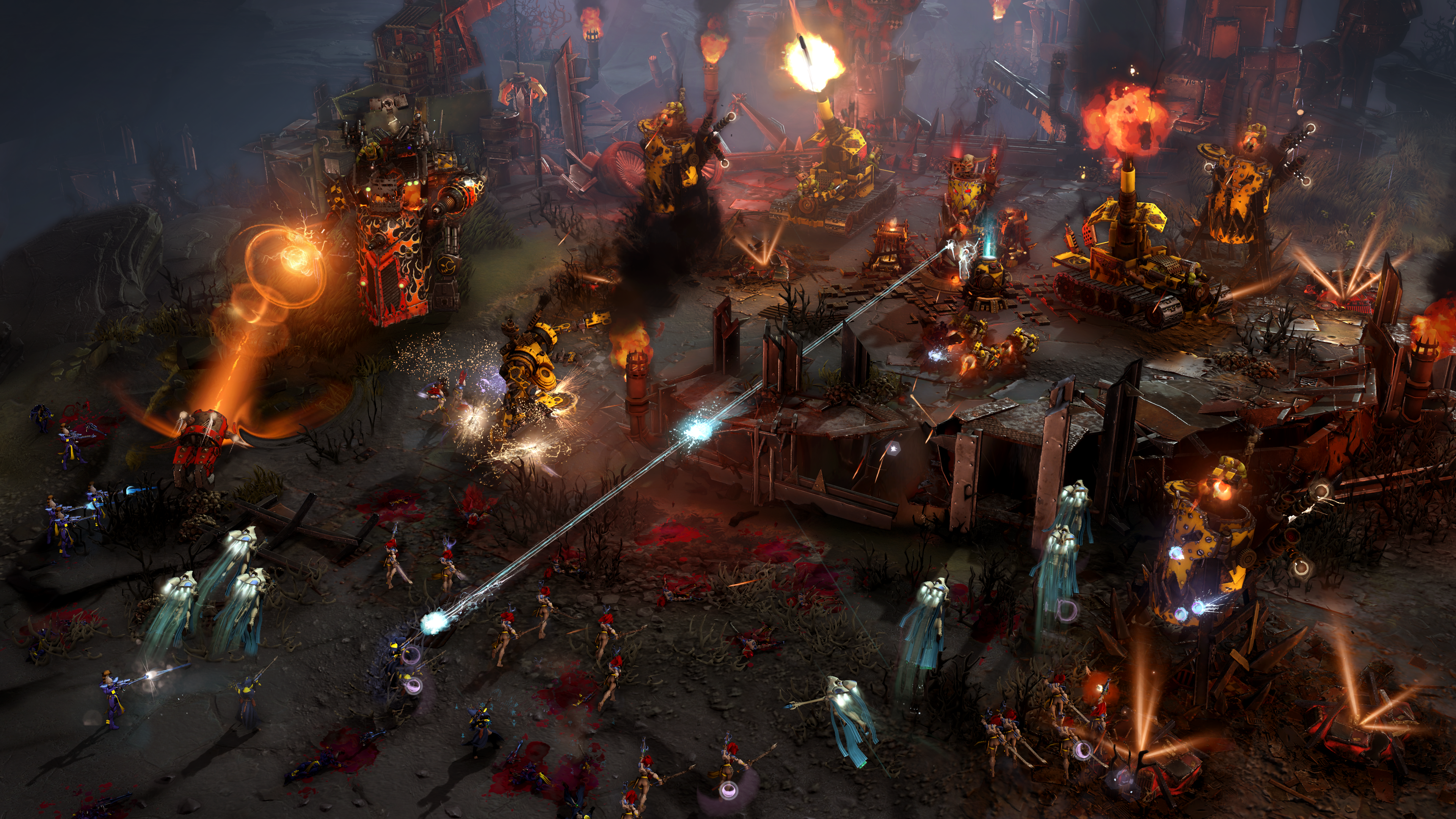Warhammer 40,000: Dawn of War III review
RTS meets MOBA in this solid threequel with an identity crisis

It’s taken on new forms, thanks to multiplayer online battle arena, or MOBA, franchises like League of Legends, Dota 2 and Heroes of the Storm. As a result, Warhammer 40,000: Dawn of War III sees developer Relic Entertainment return to the drawing board for what’s resulted in a mixed revival of a cult classic franchise.
Like previous entries in the series, your role in Dawn of War III takes place from above, watching over the battleground. You build, control and revive units all from a top-down perspective, leaving immersion to the ghostly music, flashy animations and shrieks of human enemies being decapitated by Gorgutz the Ork’s Spinnin’ Klaw ability. Or Gabriel Angelos’ God-Splitter ability – maybe even Farseer Marcha’s Singing Spear.
That’s right, while real-time strategy die-hards might find this system unbalanced, MOBA fans will be elated to discover that Dawn of War III relies heavily on its three factions of elite units. Essentially the same as hero units in a MOBA, each of these characters are playable throughout the duration of the rather extensive campaign.
Speaking of which, the single-player aspect of Dawn of War III is a missed opportunity. What little story that exists is told through concept art renderings animated only by the panning and zooming of an in-game camera. The rest is told in humorous monologues blurted out by elites such as Gorgutz who, in his Scottish-sounding accent, can be heard shouting phrases along the lines of, “Wait ‘til you see the mess I’ve made!” sporadically mid-mission.

Real-time battle arena
The gameplay in Dawn of War III consists of rather lengthy and sometimes cumbersome (but usually entertaining) missions that see you collect resources, generate and upgrade units, and take down enemy bases all in an effort to prepare for the more technical multiplayer matches.
In fact, the campaign never feels like more than basic training in preparation for the competitive online play. Given the amount of content, we wouldn’t have many qualms about the campaign if it weren’t constantly interrupted by server connectivity issues.
Yes, even Dawn of War III’s single-player campaign progression system requires a steady connection to Relic’s servers. That wouldn’t be too much of an issue if we didn’t have to restart the mission we were just on every time there was an interruption. And there were a lot of interruptions.
Sign up for breaking news, reviews, opinion, top tech deals, and more.
[Editor’s Note: Relic Entertainment has since clarified the always-online nature of Warhammer 40K: Dawn of War III in this blog post.]
Luckily, there’s a manual save system in place that makes returning to critical parts of the game seamless, as long as you remember to take advantage of it and actually, you know, save often.




Against all odds, the campaign in Dawn of War III starts off by immediately pitting you against waves of enemies. The absence of a tutorial will either leave you feeling pleased or puzzled as your commander steps foot on the planet Cyprus to hand adversaries their butts.
Regardless, there’s practically no need for introductions in Dawn of War III. Shortcuts (including hotkeys) to various actions – such as attacking, defending and selecting all units on-screen – are prominently featured on the bottom right-hand corner of your PC’s display. Click on a unit,and you’ll find, on the opposite side of the screen, the catalog of abilities specific to it.
While Elites are more focused on combative techniques peppered with faction-specific bonus effects, one of which usually helps with traversal, other types of infantry specialize in alternative trades.
Gretchins, for example, serve as support characters for the Ork class and are necessary for producing buildings as well as repairing vehicles and structures. The comically-named Boyz, on the other hand, are all about offering melee support to your squadron.

War(hammer 40K) games
In the first mission, you are tasked with keeping Gabriel Angelos alive using whatever strategy works best for you. You can focus on using grunt infantry to lead the way or – to save time – you could easily exploit the brute force of the Elite unit.
Considering how powerful Relic made the Elites in this game (essentially amplified versions of Dawn of War II’s Hero characters), you have a better chance of having your service interrupted than admitting defeat in the campaign after the first mission.
Once you’ve kept Gabriel Angelos safeguarded from oncoming attacks, the missions that follow allow you to simply resurrect your Elite characters after a brief suspension when they die.
This system works the exact same way in the multiplayer, but of course, there’s an actual score to be kept there, resulting in actual long-term consequences for Elite fatalities. In the single-player mode, however, Elites are massively overpowered, giving you little incentive to flesh out your army.




That’s all good and well if you prefer the style of the modern MOBA, but for Dawn of War fundamentalists, this arguably takes away from what made the series so compelling to begin with. Even so, it doesn’t appear as though Dawn of War III is trying to appeal to the franchise’s legacy audience as much as newcomers.
The campaign itself in Dawn of War III is repetitive, designed for those who plan on mastering the mechanics and “meta game” before jumping right into multiplayer.
You’ll spend most of your time gathering resources or challenging waves of enemies to combat, though there’s even some stealth sprinkled in throughout. One minute, you’ll find yourself looting materials to spawn more units and vehicles and the next, you’ll be directing infantry through tall grass to avoid enemy contact altogether.

Multiplayer mayhem
The real treat in Dawn of War III, as is the case with most RTS games, is the online multiplayer, which comes in flavors of 3-v-3, 2-v-2 and 1-v-1. As has been the case since the original Dawn of War launched in 2004, there is no specific class of units needed to gather resources. They’re almost automatically collected over time.
By upgrading defensive building real estate – particularly those located in the center of the map – you’ll accumulate resource points over time to spend on actual resources.
These can be used to brush up your army and, in turn, hopefully bulk up beyond the capabilities of your enemy in both strength and strategic variety.
Speaking of buildings, unlike in the previous games, variations of these structures are kept to a minimum. Sure, there’s usually a barracks for standard units, a specialized building for certain mid-level units, a building for upgrades and typically one for vehicles, but that’s truly about it.
You’ll want to use these to continuously develop your army in most cases, as virtually everyone and everything – besides your Elites – is, frankly, disposable.




The Elites themselves are acquired by stocking up on Elite points, which can be had automatically over time, though at an accelerated rate as more resource areas are claimed. Considering the vulnerability of non-Elite units in Dawn of War III, Elites are your best chance at delivering an offensive strategy.
In many cases, battles wind up being solely your Elites versus your opponents’ Elites in a jazzy, ostentatious fight to the death. Fortunately, if your Elite accepts its fate early on in the game, you can bring him or her back by racking up more Elite points.
Of course, there are some RPG elements that can power up non-Elite units in order to at least stand a chance rather than suffering instant casualties. You can even select buffs before each match, and once you’ve played enough games to realize what works and what doesn’t, you can potentially find a winning strategy from that alone.
In spite of this, standard units are best experienced as support characters in Dawn of War III, assisting Elites to capture bases rather than the other way around. Building a ton of standard units alone won’t result in a winning formula, as this is an RTS that’s more focused on its hero characters than most, differing dramatically from the Warhammer 40K tabletop series it’s based on.

Verdict: play it
If you were expecting Dawn of War in its original form, with a fresh coat of paint, massive battles and an enticing narrative, this is not the game for you. The Elite characters are all equipped with unique and interesting designs and abilities, but they also make this RTS feel uncharacteristically like a MOBA. It’s clear where the future is headed with the genre, so while you’re in for a good time in the multiplayer, the campaign is nothing special.
The RTS genre has seen something of a revival this year. If you want a modern RTS with a memorable plot and fascinating cast of characters, there’s Halo Wars 2. If you want to relive the classic RTS, Starcraft Remastered will soon be at your disposal. However, if you keep an open mind and long for an RTS that challenges the pedigree of the genre, we can confidently say Dawn of War III succeeds in that regard.
Issues like server connectivity can be ironed out and likely will be, but a patch to address the vexatious interferences to the story is more of a wish list item. Even if you’re better off ignoring the campaign, which often fails to exemplify the value of the nuanced Elites beyond sheer unrivaled clout in multiplayer, Dawn of War III’s online play is worth a shot for MOBA fans or even RTS fans exhausted by the standard formula.

Welcome to TechRadar's 3rd annual PC Gaming Week, celebrating the almighty gaming PC with in-depth interviews, previews, reviews and features all about one of the TechRadar team’s favorite pastimes. Missed a day? Check out our constantly updated hub article for all of the coverage in one place.
